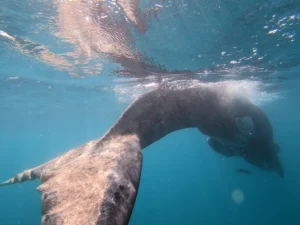Ctenophora, commonly known as comb jellies, comprises a diverse phylum of marine invertebrates found in oceans across the world. These intriguing organisms are distinguished by their unique propulsion mechanism, utilising specialised cilia called “combs” for locomotion. Remarkably, ctenophores are the largest animals known to employ cilia for movement, ranging widely in size from a few millimetres to an impressive 1.5 metres in length. Approximately 100 to 150 ctenophore species have been formally documented, with an additional 25 awaiting official description.
Comb jellies have a distinct gelatinous body approximately two cells thick on the exterior, surrounding an internal cavity. Body forms vary greatly across the phylum, including spherical cydippids with retractable tentacles, flat platyctenids lacking combs, and beroids with large mouths for consuming other ctenophores. While typically colourless and transparent in surface waters, deeper-dwelling species may display strong pigmentation. Moreover, some ctenophores exhibit bioluminescence, emitting blue or green light to aid with defence, communication or to deter predation by turtles, fish, marine mammals, and crustaceans.
Comb jellies function primarily as predators, feeding on a range of organisms from microscopic larvae to small crustaceans. Moreover, some comb jelly juveniles adopt a parasitic lifestyle, whereby they attach themselves to salps, which serve as a primary food source for their adult counterparts. In areas where comb jellies are abundant, their natural predation helps control the numbers of small zooplankton, including copepods. This predatory behaviour maintains balance within the phytoplankton-copepod food chain. However, when introduced to new environments, comb jellies can have significant ecological impacts. For instance, the accidental introduction of the warty comb jelly (Mnemiopsis leidyi), into the Black Sea in Europe led to a decline in fish catches, due to the excessive consumption of fish larvae and small crustaceans, which serve as crucial food sources for adult fish.

As their namesake suggests, the unique cilia known as “combs” are a defining feature of ctenophores. Arranged in rows, these cilia consist of thousands of hair-like structures, reaching up to 2 millimetres in length. Comb jellies exhibit distinctive ciliary beating patterns, propelling them away from their mouths during the propulsion stroke, unlike jellyfish, which swim toward their food. Some ctenophores can achieve rapid bursts of speed when threatened, accelerating up to six times their usual pace. Moreover, they may also employ a reversal of the power stroke in their cilia as part of an escape strategy.
Comb jellies possess a unique nervous system characterised by the absence of a centralised brain. Instead, they rely on a subepidermal nerve net, resembling a cobweb, encircling the mouth and concentrated near structures like comb rows, pharynx, and tentacles. However, fossil evidence indicates that ancient ctenophores possessed a more intricate nervous system, presenting the possibility that ctenophores represent a distinct lineage among animals, indicated by their independently evolved nervous system.
Due to a diverse array of reproductive strategies, coupled with their ability to reproduce at a young age and adapt to varying environmental conditions, comb jellies are particularly resilient, experiencing considerable ecological success within marine ecosystems. The ancestral comb jelly was hermaphroditic, capable of producing both eggs and sperm. Today, some species are simultaneous hermaphrodites, producing both eggs and sperm simultaneously, while others are sequential hermaphrodites, with their eggs and sperm maturing at different times. Moreover, some comb jellies possess the remarkable ability to regenerate damaged tissues, and even reproduce through cloning, where new individuals develop from fragments splitting off from their bodies. Most ctenophores lack a distinct larval stage, with juveniles resembling miniature adult forms and gradually transitioning into their adult bodies as they grow. However, some groups, like the flat and bottom-dwelling platyctenids, exhibit more complex larval behaviours, residing among plankton before undergoing a more radical development to reach adulthood.
Ctenophores do not typically fall under the spotlight of conservation concerns and are not subject to targeted conservation efforts due to their robust populations and widespread distribution in marine ecosystems. Nevertheless, they hold significance and contribute to maintaining the balance of important marine food chains. While not endangered, they are essential components of marine biodiversity, and offer insights into the evolution and diversity of marine life, making them valuable subjects of scientific research and ecological monitoring. We sometimes encounter comb jellyfish while participating in our favourite adventure activities in Cape Town; namely freediving and snorkeling. They are usually more abundant during or just after algal and plankton blooms and are often found swimming amongst other jellies like compass jellyfish.



